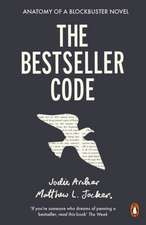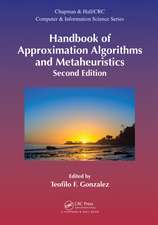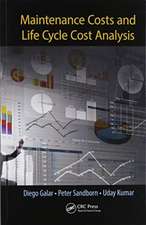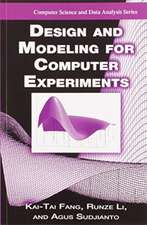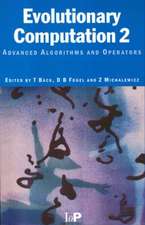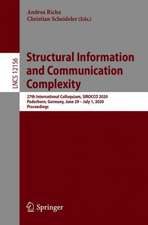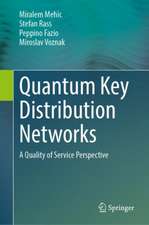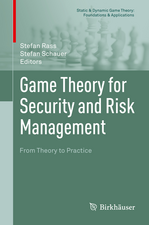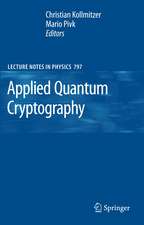Quantum Random Number Generation: Theory and Practice: Quantum Science and Technology
Editat de Christian Kollmitzer, Stefan Schauer, Stefan Rass, Benjamin Raineren Limba Engleză Hardback – 27 feb 2020
Random number generation is a major pillar of cryptography. Capitalizing on the randomness inherent in quantum phenomena is a rapidly evolving branch of quantum cryptography with countless applications for the future. The value of quantum randomness for cryptographic purposes is empirically demonstrated in statistical evaluations of QRNGs’ performance compared to classical techniques for true and pseudorandom number generation. The book then provides an overview of technical implementations of QRNGs, before a concluding discussion of major achievements and remaining obstacles in the field rounds out the coverage, while also opening the door for future research directions.
Din seria Quantum Science and Technology
- 15%
 Preț: 530.42 lei
Preț: 530.42 lei - 17%
 Preț: 362.72 lei
Preț: 362.72 lei -
 Preț: 425.20 lei
Preț: 425.20 lei - 18%
 Preț: 783.20 lei
Preț: 783.20 lei - 15%
 Preț: 643.34 lei
Preț: 643.34 lei - 18%
 Preț: 1226.24 lei
Preț: 1226.24 lei - 15%
 Preț: 644.95 lei
Preț: 644.95 lei - 18%
 Preț: 950.21 lei
Preț: 950.21 lei - 18%
 Preț: 908.52 lei
Preț: 908.52 lei - 18%
 Preț: 729.53 lei
Preț: 729.53 lei - 18%
 Preț: 1114.34 lei
Preț: 1114.34 lei - 18%
 Preț: 1119.32 lei
Preț: 1119.32 lei -
 Preț: 451.48 lei
Preț: 451.48 lei - 18%
 Preț: 890.06 lei
Preț: 890.06 lei - 18%
 Preț: 782.57 lei
Preț: 782.57 lei - 18%
 Preț: 939.94 lei
Preț: 939.94 lei - 18%
 Preț: 892.90 lei
Preț: 892.90 lei - 18%
 Preț: 947.18 lei
Preț: 947.18 lei - 15%
 Preț: 653.33 lei
Preț: 653.33 lei - 18%
 Preț: 792.34 lei
Preț: 792.34 lei
Preț: 928.77 lei
Preț vechi: 1160.95 lei
-20% Nou
Puncte Express: 1393
Preț estimativ în valută:
177.74€ • 184.51$ • 148.21£
177.74€ • 184.51$ • 148.21£
Carte tipărită la comandă
Livrare economică 22 martie-05 aprilie
Preluare comenzi: 021 569.72.76
Specificații
ISBN-13: 9783319725949
ISBN-10: 3319725947
Pagini: 422
Ilustrații: XXI, 120 p. 49 illus., 33 illus. in color.
Dimensiuni: 155 x 235 mm
Greutate: 0.38 kg
Ediția:1st ed. 2020
Editura: Springer International Publishing
Colecția Springer
Seria Quantum Science and Technology
Locul publicării:Cham, Switzerland
ISBN-10: 3319725947
Pagini: 422
Ilustrații: XXI, 120 p. 49 illus., 33 illus. in color.
Dimensiuni: 155 x 235 mm
Greutate: 0.38 kg
Ediția:1st ed. 2020
Editura: Springer International Publishing
Colecția Springer
Seria Quantum Science and Technology
Locul publicării:Cham, Switzerland
Cuprins
What is Randomness?.- Classical Sources of Randomness.- Pseudo-Randomness.- Physical Randomness.- Tests and Certification of Randomness.- Quantum Randomness.- Implementations of QNRGs.- Comparison of QNRGs.- Post-Processing for QNRGs.- Other Post-Processing Methods.
Textul de pe ultima copertă
This book provides an overview of state-of-the-art implementations of quantum random number generators (QRNGs), and especially examines their relation to classical statistical randomness models and numerical techniques for computing random numbers. The reader – who ideally has a background in classical statistics, computer science, or cryptography – is introduced to the world of quantum bits step by step, and explicit relations between QRNGs and their classical counterparts are identified along the way.
Random number generation is a major pillar of cryptography. Capitalizing on the randomness inherent in quantum phenomena is a rapidly evolving branch of quantum cryptography with countless applications for the future. The value of quantum randomness for cryptographic purposes is empirically demonstrated in statistical evaluations of QRNGs’ performance compared to classical techniques for true and pseudorandom number generation. The book then provides an overview of technical implementations of QRNGs, before a concluding discussion of major achievements and remaining obstacles in the field rounds out the coverage, while also opening the door for future research directions.
Random number generation is a major pillar of cryptography. Capitalizing on the randomness inherent in quantum phenomena is a rapidly evolving branch of quantum cryptography with countless applications for the future. The value of quantum randomness for cryptographic purposes is empirically demonstrated in statistical evaluations of QRNGs’ performance compared to classical techniques for true and pseudorandom number generation. The book then provides an overview of technical implementations of QRNGs, before a concluding discussion of major achievements and remaining obstacles in the field rounds out the coverage, while also opening the door for future research directions.



